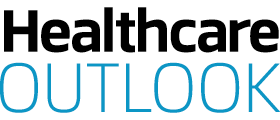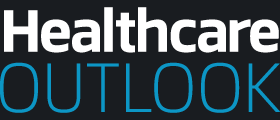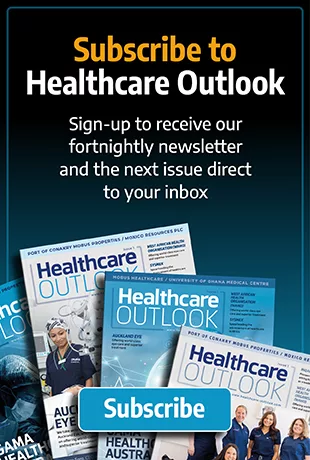Electronic prescribing and medicines administration (EPMA) technology can be pivotal in transforming the way medication is delivered and managed, but that is only possible with the right solution that provides data insights.
The ability to have a medical record follow the patient across every setting is changing the way in which health and social care is being delivered, with its value already being demonstrated for the early adopters of electronic prescribing and medicines administration (EPMA) solutions.
For example, in the north-east of England, an NHS healthcare trust has deployed new technology across all clinical areas including inpatient, outpatient, and emergency departments, allowing it to extend its reach into more complex and high-risk areas such as neonatal intensive care units (ICUs).
This means that clinicians within the hospital have access to vital prescribing information in seconds, streamlining the prescription process and improving the overall patient experience.
Abolishing the barriers between different medicine data silos in this way reduces the well-known medication risks associated with transfers of care, ensuring information is passed on quickly and accurately between the different teams.
EPMA EVOLUTION
All of this is possible because EPMA solutions have continually evolved to meet varying demands and requirements over the last five years.
Previously, there were few electronic patient records that could offer comprehensive medicines management. Many early initiatives in the NHS focused on a best-of-breed approach, adopting standalone solutions, and while each one may have had good functionality, the net result was a disjointed system of medicines information that wasn’t coherent in the clinical record.
Given that this technology formed the basis on which decisions were made about crucial and potentially life-or-death medicines and treatments, there is a clear need for a more unified system.
Industry awareness that medicines must be part of a unified system is what has driven today’s exciting EPMA developments. Research has consistently shown many medication errors happen during transitions within a healthcare facility, whether that is a patient coming into the hospital or transitioning from the emergency department to a ward, for example.
A study conducted by the University of Manchester found that there were 1.8 million transition medication errors in England per year, with almost 370,000 patients being admitted, transferred, or discharged experiencing a transition medication error. As patients are moved through the hospital and set for discharge, a seamless, continuous flow of medicines information is essential to prevent prescription errors and potential patient harm.

SHARING AND RECEIVING INFORMATION
Alongside the step-up and step-down transitions of care within an acute hospital, clinicians also need to share and receive information between additional services.
At the point of coming into the hospital, a nurse or doctor would need to see what a patient might have already been given by other services as, for example, the individual could be a cancer patient who has not been seen before in that specific hospital but is very ill.
Nursing teams need to be able to see, very quickly, the patient’s pre-existing conditions, what medicines they have been given, and what chemotherapy they have taken.
In another case, the patient may have received medication for a mental health condition but is presenting with entirely separate symptoms. Clinicians need to know the full story before they decide the next step in a patient’s treatment journey.
It is interoperability that has advanced EPMA. The evolution of the Fast Healthcare Interoperability Resources (FHIR) standard has made a significant difference in terms of being able to precisely prescribe, code, and share medicines information across services.
This is a change that solution vendors have had to handle over the past few years, embedding a FHIR repository as a default capability so that it is ready to support transitions of care.

“As healthcare becomes more joined up, being able to follow a patient’s prescription history between wards, hospitals, and other care settings is going to be crucial”
Gary Mooney, Clinical Solution Executive, InterSystems
CLEAR, CONSISTENT COMMUNICATION
Alongside this has come the need to ensure clinicians are not tied to their computer screens for too long.
The focus has been on knitting the solution into people’s real-world workflows and practices so there is minimal disruption, with an emphasis on creating usable interfaces that are easy to navigate on the go.
This all matters because we know clearer, more consistent communication can save significant hours in single trusts. No longer must staff sift through paper drug charts to see which patients need medication and what the dosages are.
Instead, they can see all that information in an easy-to-use and intuitive digital platform that provides up-to-date data in real time to help them make better decisions.
We also know from early adopters that use of EPMA can reduce errors by as much as 80 percent, all the while giving staff far more time to spend with their patients.
It has resolved many difficulties relating to dosage monitoring, especially in pain-relief, where doses can be missed due to the hectic nature of many wards.
Where EPMA solutions have been implemented, there has been a noteworthy reduction in the number of missed doses reported by trusts, which is important for outcomes and the patient experience.
THE FUTURE OF EPMA
If solutions have analytical capabilities, organisations can also track the effectiveness of medication, fine-tuning use in a way that is not possible with conventional paper records.
Since this is an area of significant innovation, the future of EPMA in clinical settings may include pharmacogenomics, analysing the genomic influences on how individuals respond to medicines.
Taking the initiative to integrate such information could reduce hospital admissions caused by adverse drug reactions, saving time and money and providing better outcomes.
Yet, introducing a significant change in the way clinicians access and use patient information does not happen with the click of a single mouse.
It is necessary to involve nursing teams, clinical pharmacies, technicians, and of course, doctors, right from the outset. They also need the support of a capable digital team that is prepared to work collaboratively with those who will be using the technology to help drive up adoption from those on the ground.
As healthcare becomes more joined up, being able to follow a patient’s prescription history between wards, hospitals, and other care settings is going to be crucial.
Patient expectations are consistently changing, and as healthcare embarks on its own digital transformation journey, those trusts that adopt an EPMA solution that is purpose-built for its own health setting will transform efficiency, reduce risk, and improve patient experience and outcomes.























